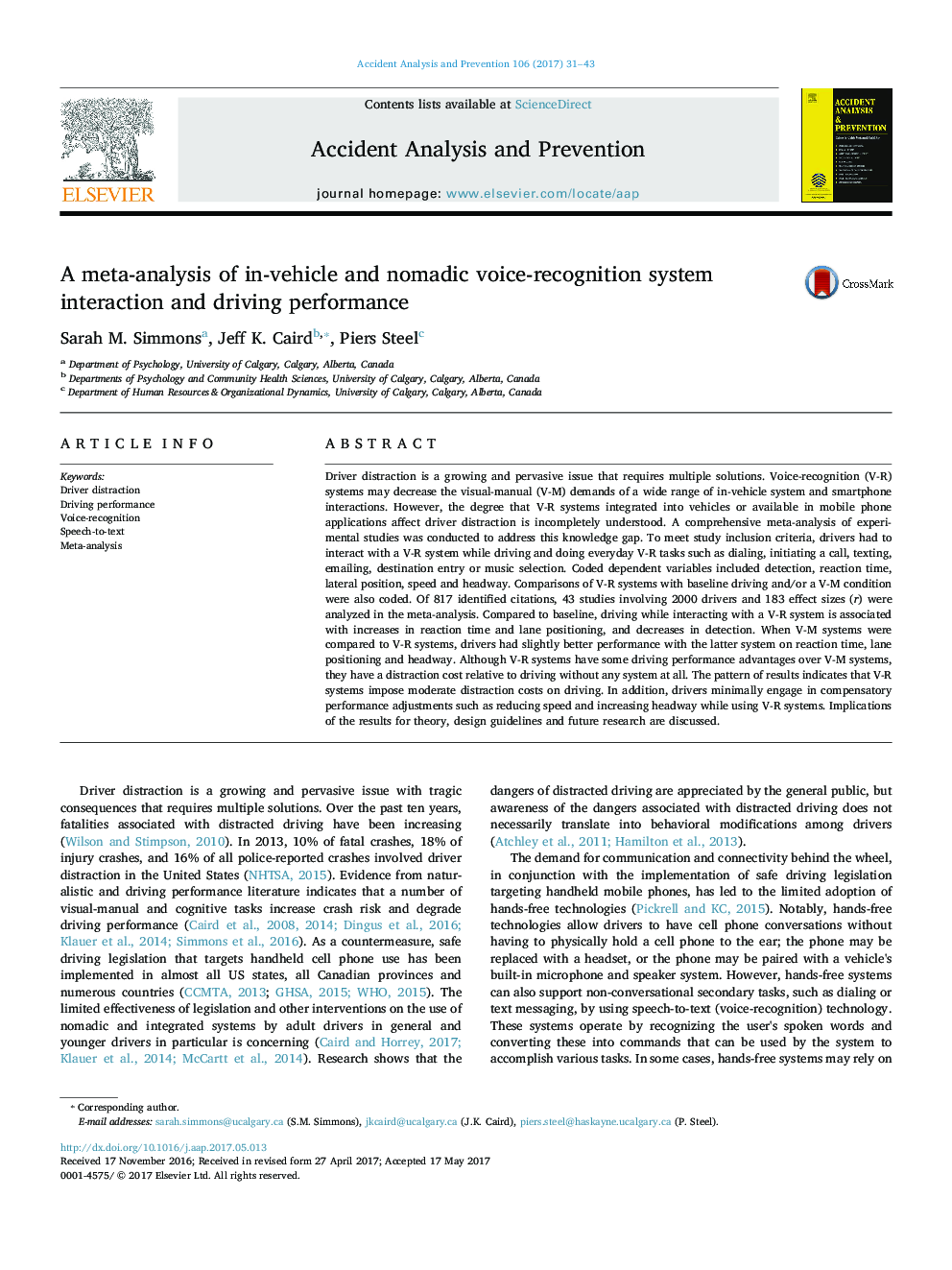| Article ID | Journal | Published Year | Pages | File Type |
|---|---|---|---|---|
| 4978669 | Accident Analysis & Prevention | 2017 | 13 Pages |
Abstract
Driver distraction is a growing and pervasive issue that requires multiple solutions. Voice-recognition (V-R) systems may decrease the visual-manual (V-M) demands of a wide range of in-vehicle system and smartphone interactions. However, the degree that V-R systems integrated into vehicles or available in mobile phone applications affect driver distraction is incompletely understood. A comprehensive meta-analysis of experimental studies was conducted to address this knowledge gap. To meet study inclusion criteria, drivers had to interact with a V-R system while driving and doing everyday V-R tasks such as dialing, initiating a call, texting, emailing, destination entry or music selection. Coded dependent variables included detection, reaction time, lateral position, speed and headway. Comparisons of V-R systems with baseline driving and/or a V-M condition were also coded. Of 817 identified citations, 43 studies involving 2000 drivers and 183 effect sizes (r) were analyzed in the meta-analysis. Compared to baseline, driving while interacting with a V-R system is associated with increases in reaction time and lane positioning, and decreases in detection. When V-M systems were compared to V-R systems, drivers had slightly better performance with the latter system on reaction time, lane positioning and headway. Although V-R systems have some driving performance advantages over V-M systems, they have a distraction cost relative to driving without any system at all. The pattern of results indicates that V-R systems impose moderate distraction costs on driving. In addition, drivers minimally engage in compensatory performance adjustments such as reducing speed and increasing headway while using V-R systems. Implications of the results for theory, design guidelines and future research are discussed.
Related Topics
Physical Sciences and Engineering
Chemical Engineering
Chemical Health and Safety
Authors
Sarah M. Simmons, Jeff K. Caird, Piers Steel,
